
The pipe organ is a musical instrument that produces sound by driving pressurized air through the organ pipes selected from a keyboard. Because each pipe produces a single pitch, the pipes are provided in sets called ranks, each of which has a common timbre and volume throughout the keyboard compass. Most organs have many ranks of pipes of differing timbre, pitch, and volume that the player can employ singly or in combination through the use of controls called stops.
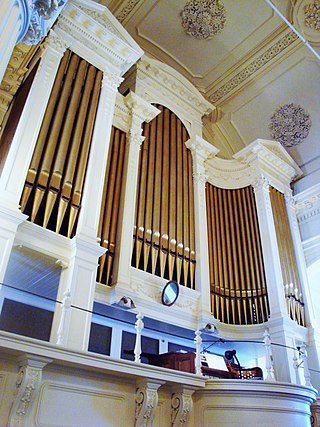
Æolian-Skinner Organ Company, Inc. of Boston, Massachusetts was an American builder of a large number of pipe organs from its inception as the Skinner Organ Company in 1901 until its closure in 1972. Key figures were Ernest M. Skinner (1866–1960), Arthur Hudson Marks (1875–1939), Joseph Silver Whiteford (1921-1978), and G. Donald Harrison (1889–1956). The company was formed from the merger of the Skinner Organ Company and the pipe organ division of the Æolian Company in 1932.
Gabriel Kney is a Canadian builder of pipe organs based in London, Ontario.
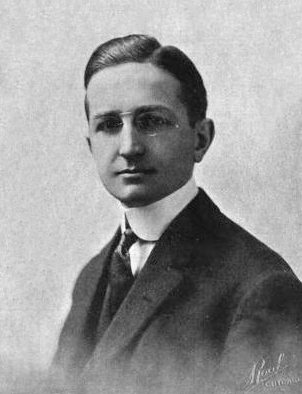
Ernest Martin Skinner was an American pipe organ builder. His electro-pneumatic switching systems advanced the technology of organ building in the first part of the 20th century.
Mathias Peter Møller, commonly known as M.P. Möller or Moeller, was a prolific pipe-organ builder and businessman. A native of the Danish island of Bornholm, he emigrated to the United States in 1872 and founded the M.P. Moller Pipe Organ Company in Greencastle, Pennsylvania, in 1875. The city of Hagerstown, Maryland, took notice of Möller's early successes and induced him to move his business there in 1881 to help make it a viable business center in Western Maryland. The company remained in business in Hagerstown. until 1992, with hundreds of employees at its peak and a lifetime production of over 12,000 instruments.
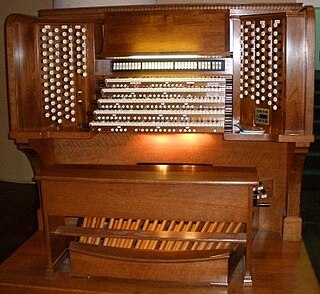
The symphonic organ is a style of pipe organ that flourished during the first three decades of the 20th century in town halls and other secular public venues, particularly in the United States and the United Kingdom. It has roots in 19th-century Europe, and is a variation of the classical pipe organ. It features expanded capabilities, with many pipes imitative of orchestral instruments, and with multiple expressive divisions and organ console controls for seamlessly adjusting volume and tone, generally with electric organ actions and winding. These expansions let the organist approximate a conductor's power to shape the tonal textures of Romantic music and orchestral transcriptions. These organs are generally concert instruments as opposed to church organs. The symphonic organ has seen a revival in the US, Europe and Japan, particularly since the 1980s.
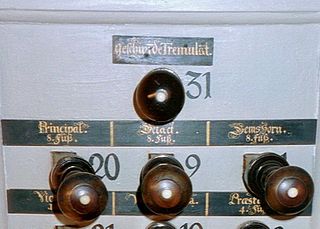
A tremulant is a device on a pipe organ which varies the wind supply to the pipes of one or more divisions. This causes their amplitude and pitch to fluctuate, producing a tremolo and vibrato effect. A large organ may have several tremulants, affecting different ranks (sets) of pipes. Many tremulants are variable, allowing for the speed and depth of tremolo to be controlled by the organist. The tremulant has been a part of organ building for many centuries, dating back to Italian organs of the sixteenth century.
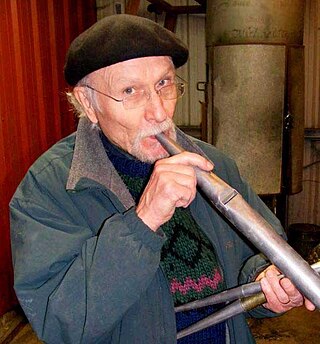
John Burlin Brombaugh is an American pipe organ builder known for his historically oriented tracker action pipe organs.
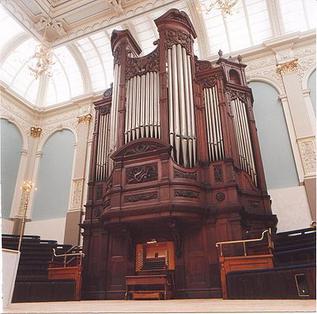
Henry Willis & Sons is a British firm of pipe organ builders founded in 1845. Although most of their installations have been in the UK, examples can be found in other countries.
Ralph William Downes CBE KSG was an English organist, organ designer, teacher and music director and was Professor of Organ in the Royal College of Music.

Austin Organs, Inc., is a manufacturer of pipe organs based in Hartford, Connecticut. The company is one of the oldest continuously-operating organ manufacturers in the United States. The first instruments were built in 1893 with the Austin Patent Airchest, and many remain in fine playing condition to this day.

C. B. Fisk, Inc. is a company in Gloucester in the U.S. state of Massachusetts that designs and builds mechanical action pipe organs. It was founded in Gloucester in 1960 by Charles Brenton Fisk (1925–1983) and Thomas W. Byers.

Pasi Organ Builders, based in Roy, WA, manufactures mechanical action organs and restores historic instruments. Martin Pasi received his first formal experience in organ building during a four-year apprenticeship with the Rieger Company in his native Austria. After working in Austria and in the United States, Pasi set up his own studio, Pasi Organ Builders, in 1990 in a former school building in Roy, Wash.

Paul Fritts is an American organ builder based in Tacoma, Washington, who, following historical models, has created over thirty mechanical action instruments that have contributed to the revival of historically informed organ music. The Murdy organ at Basilica of the Sacred Heart in Notre Dame, Indiana is his largest Fritts instrument to date, with four manuals (keyboards) and 70 stops. Other recent Fritts instruments of note are located at the University of Notre Dame, Princeton Theological Seminary, and Pacific Lutheran University. The organ at PLU was the largest Fritts organ built before the organ in Columbus.
Thomas Mantle Murray is an American organist, known as an interpreter of Romantic organ music. He was a Professor of Music and university organist at the Yale School of Music from 1981 until his retirement in 2019. He is also Principal Organist and Artist in Residence at Christ Church in New Haven, Connecticut.
The Organ Reform Movement or Orgelbewegung was a mid-20th-century trend in pipe organ building, originating in Germany. The movement was most influential in the United States in the 1930s through 1970s, and began to wane in the 1980s. It arose with early interest in historical performance and was strongly influenced by Albert Schweitzer's championing of historical instruments by Gottfried Silbermann and others, as well as by Schweitzer's opinion that organs should be judged primarily by their ability to perform with clarity the polyphonic Baroque music of J. S. Bach (1685–1750). Concert organist E. Power Biggs was a leading popularizer of the movement in the United States, through his many recordings and radio broadcasts. The movement ultimately went beyond the "Neo-Baroque" copying of old instruments to endorse a new philosophy of organ building, "more Neo than Baroque". The movement arose in response to perceived excesses of symphonic organ building, but eventually symphonic organs regained popularity after the reform movement generated excesses of its own.
Pipe organs that are tuned in meantone temperament are very rare in North America. They are listed here, by type of temperament and sorted by date of construction. North America is defined here as Canada, the United States of America and Mexico. All instruments listed are playable but unplayable instruments may be added with a note.

Martin Ellis is an American church, concert and theatre organist. He is currently the organist for Rose City Park Presbyterian Church in Portland, Oregon. He was Principal Organist and Assistant Music Director at North United Methodist Church, and Senior Staff Pianist/Organist, Staff Arranger and Orchestrator for the Indianapolis Children's Choir and Youth Chorale in Indianapolis, Indiana until August, 2014. He works with Gresham High School's Theatre Arts Department as their resident piano accompanist.
Henry Bevington was a prolific English organ builder, active in London during the Victorian era. Many of his organs were erected in Australia and South Africa.
Charles Brenton Fisk was an organ builder who was one of the first to use mechanical tracker actions instead of electro-pneumatic actions in modern organ construction. Prior to his career in organ building, Fisk was involved in the Manhattan Project during World War II, after which he changed his career from atomic physics to organ building. He was the co-founder of C.B. Fisk, Inc., which is a firm that has built many respected organs worldwide. He was born in Washington, D.C. and grew up in Massachusetts.












